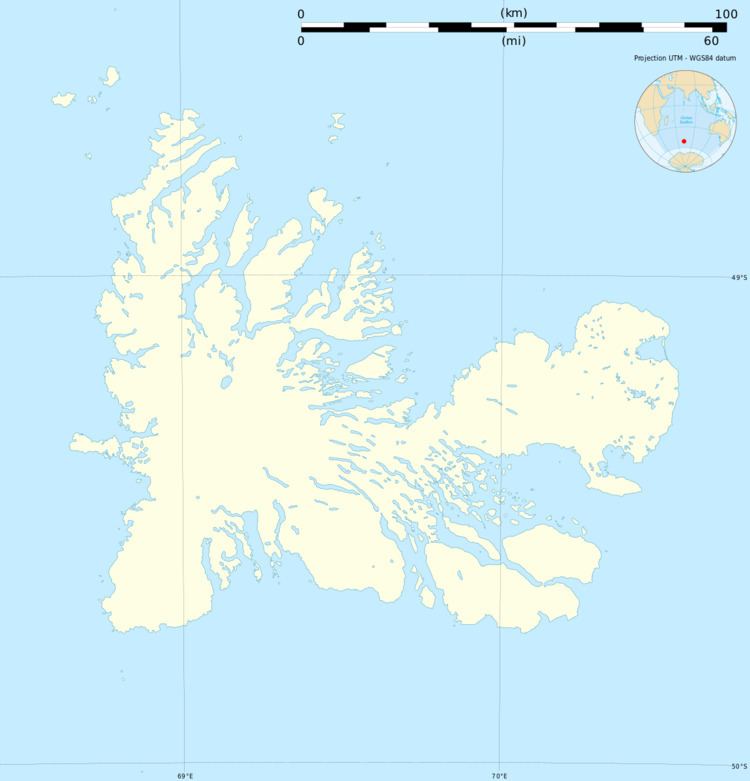Location North of Île Howe Highest point Île Dauphine HP Elevation 71 m | Highest elevation 71 m (233 ft) Population Uninhabited | |
 | ||
Major islands Île de Castries, Île Dauphine Zone French Southern and Antarctic Lands | ||
The Îles Leygues, or Leygues Islands, also sometimes known as the Îles Swain, comprise a group of small islands and islets that are part of the subantarctic Kerguelen archipelago, a French territory in the southern Indian Ocean.
Contents
- Map of Leygues Islands French Southern and Antarctic Lands
- Geography
- Ecology
- Important Bird Area
- References
Map of Leygues Islands, French Southern and Antarctic Lands
They were named after Georges Leygues (1857-1933), a French politician and Minister of Marine. They are important as a breeding site for seabirds and fur seals.
Geography
The Îles Leygues lie across the Passe de la Résolution from Île Howe, and north of the main Kerguelen island of Grande Terre. The two largest islands are Île de Castries and Île Dauphine. Île de Castries, the largest of them is 500 ha. Far to the north lie the Roches du Terror and to the east the Roches du Gallieni rocks. The landscape of the islands is mainly flat, though rising westwards to form coastal cliffs. Access from the sea is virtually impossible because of extensive banks of giant kelp surrounding the group.
Ecology
Humans are not known to have set foot on the islands. A large colony of Antarctic fur seals occurs which has probably never been hunted and which has enabled the recolonisation of other sites from which the species was formerly exterminated.
Important Bird Area
The islands have been identified as a 24 km2 Important Bird Area (IBA) by BirdLife International. Five or six pairs of wandering albatrosses breed there as well as unknown numbers of northern giant petrels and Kerguelen shags. Other petrels may also nest on the islands but data are lacking because the only available information is from offshore observations.
